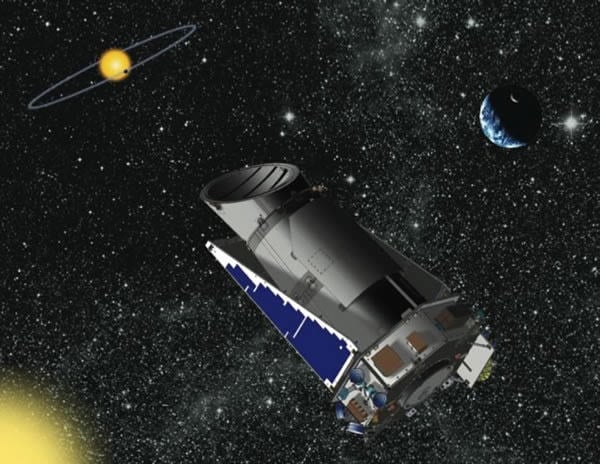[/caption]
NASA's Kepler spacecraft is back in planet-hunting action after a computer malfunction put it into "safe mode" for 144 hours (six days.) The anomaly occurred on March 14, 2011 immediately after the spacecraft issued a network interface card (NIC) reset command to start a computer program update. During the reset, the NIC sent invalid reaction wheel data to the flight software, which caused the spacecraft to enter the self-protecting safe mode. The NIC is the interfaces between the spacecraft's flight software, attitude determination, and its control subsystems and sensors. Mission managers said an anomaly response team will continue to evaluate the spacecraft data to determine the cause of the safe mode event.
A safe mode is a measure the spacecraft takes to protect itself when something unexpected occurs. Kepler mission managers described what happens during a safe mode event:
"During safe mode, the spacecraft points the solar panels directly at the sun and begins to slowly rotate along a sun-aligned axis. This safe mode orientation provides the vehicle with the maximum power and limits the buildup of momentum from solar wind. The spacecraft also swapped to its backup subsystem interface box (SIB), an electronics component that provides thermal and power distribution control to all spacecraft subsystems, and powered off the photometer, the instrument used to measure light intensity to detect planets. This is a normal procedure when the spacecraft enters safe mode."
Kepler spacecraft returned to science data collection at 2:45 p.m. EDT Sunday, March 20, 2011.
Kepler launched in 2009 to look for alien worlds, hoping to find one like Earth in the just-right "Goldilocks Zone" around another star. So far, Kepler has discovered 1,235 possible planets, with 54 of those candidates in that potential habitable zone where liquid water could exist on a planet's surface. Further study is needed to see if any of these planets have the potential to harbor life.
But given how many potential habitable planets were found in just one area of the sky, astronomers have estimated that our Milky Way galaxy could hold as many as 50 billion alien planets, with 2 billion of those being about the size of Earth.
Stay tuned!
Source:
Kepler
 Universe Today
Universe Today
